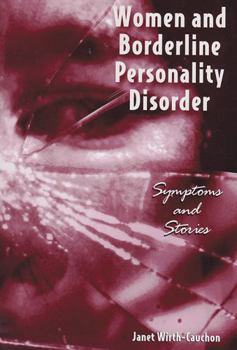Women and Borderline Personality Disorder: Symptoms and Stories
Select Format
Select Condition 
Book Overview
At the beginning of the twentieth century, "hysteria" was a medical or psychiatric diagnosis applied primarily to women. In fact, the term itself comes from the Greek, meaning "wandering womb." We have since learned, however, that this diagnosis evolved from certain assumptions about women's social roles and mental characteristics, and is no longer in use.
The modern equivalent of hysteria, however, may be borderline personality disorder, defined as "a pervasive pattern of instability of self-image, interpersonal relationships, and mood, beginning in early adulthood and present in a variety of contexts." This diagnosis is applied to women so much more often than to men that feminists have begun to raise important questions about the social, cultural, and even the medical assumptions underlying this "illness." Women are said to be "unstable" when they may be trying to reconcile often contradictory and conflicting social expectations. In Women and Borderline Personality Disorder, Janet Wirth-Cauchon presents a feminist cultural analysis of the notions of "unstable" selfhood found in case narratives of women diagnosed with borderline personality disorder. This exploration of contemporary post-Freudian psychoanalytic notions of the self as they apply to women's identity conflicts is an important contribution to the literature on social constructions of mental illness in women and feminist critiques of psychiatry in general.Format:Paperback
Language:English
ISBN:0813528917
ISBN13:9780813528915
Release Date:December 2000
Publisher:Rutgers University Press
Length:235 Pages
Weight:1.05 lbs.
Dimensions:0.5" x 6.0" x 9.0"
Customer Reviews
1 rating
Not a self-help, "information" book. . .
Published by Thriftbooks.com User , 18 years ago
All the previous reviewers hated this book, and while I can see some of their points, I think they approach the book expecting it to be a "how to" guide for the disorder. It is definitely not. The author intends it to be a discussion of how the diagnosis originated and how these presupositions still guide, knowingly and unknowingly, the diagnosis's conceptualization. These are valid issues for acadamics (not nearly as dirty a word as what the first reviewer insinuates) as well as mental health clinicians. The diagnosis is not as definitive or helpful as what people think, and framing it in a more feminist light helps remove some of the pejorative connotations within the field.






